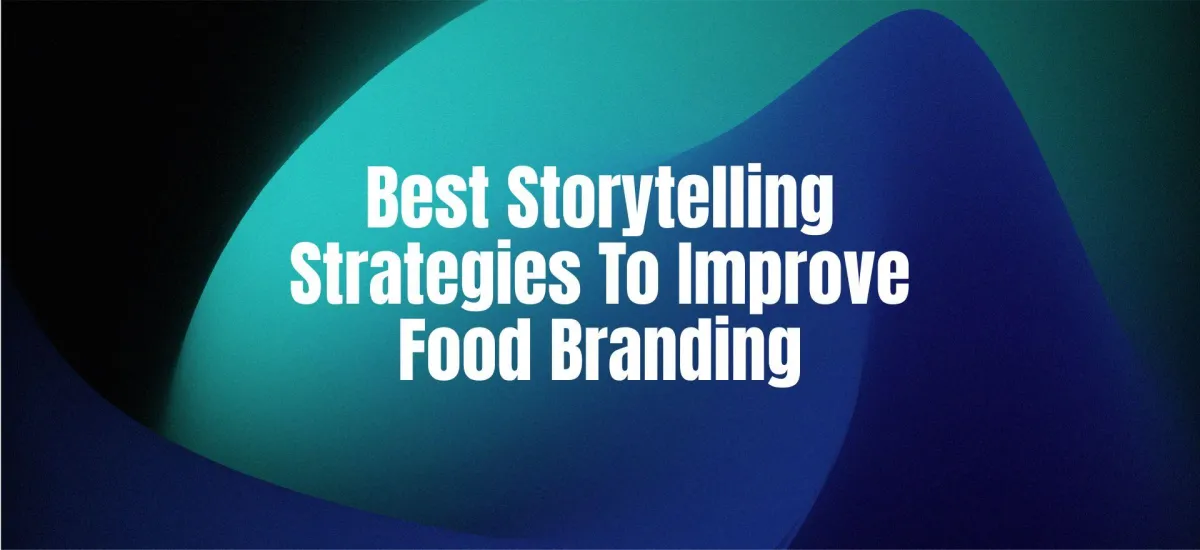
Best Storytelling Strategies to Improve Food Branding
1. Define Your Food Brand’s Core Story
2. Use Visual Storytelling Across Platforms
3. Leverage Customer Stories and Testimonials
4. Highlight the People Behind the Brand
5. Create a Signature Tagline or Brand Phrase
6. Use Storytelling in Email and Content Marketing
7. Build an Emotional Connection
8. Create a Story Series or Campaign
9. Tell Stories on Packaging and Menus
For food brands, where taste is intangible online, your story becomes your flavor. Consumers aren’t just buying what you make; they’re buying why you make it. A compelling brand story can set you apart from competitors, build trust, and turn occasional buyers into lifelong fans.
In this blog, we’ll explore the most effective storytelling strategies food businesses can use to elevate their brand presence, boost engagement, and ultimately drive sales.
1. Define Your Food Brand’s Core Story
Before you dive into marketing strategies, you need to clearly define your brand story. Ask yourself:
Why did you start this business?
What problem are you solving?
Who are you helping?
What makes your food different or meaningful?
Your origin story becomes the foundation for all your brand messaging. For example, a farm-to-table brand may share how generations of farmers in their family inspired their focus on organic, local ingredients. This backstory humanizes the brand and helps customers relate to it.
🔍 LSI keywords: food brand identity, authentic food story, brand message\
2. Use Visual Storytelling Across Platforms
Photos and videos are incredibly powerful tools in food branding. Think about platforms like Instagram or TikTok consumers want to see vibrant dishes, behind-the-scenes kitchen moments, and passionate chefs.
Tips:
Share time-lapse cooking videos or recipe creation
Show the sourcing process: local farms, markets, etc.
Highlight real customers enjoying your food
Visual content gives life to your narrative and makes your brand more memorable.
3. Leverage Customer Stories and Testimonials
One of the most trusted storytelling methods is user-generated content. Let your happy customers tell your story for you. When potential buyers see real people vouching for your food, they feel more confident in trying it.
Strategies:
Collect short video testimonials
Encourage tagged photos with branded hashtags
Feature customer reviews in Instagram highlights or web pages
You’re not just selling a dish you’re selling a dining experience. Customer stories can highlight that better than any paid ad.
🔍 LSI keywords: storytelling marketing, customer connection, emotional branding
4. Highlight the People Behind the Brand
Modern consumers value transparency and connection. Showcasing the people behind your brand—the chefs, the founders, the delivery team adds a human touch.
Ideas:
“Meet the Team” blog posts or Instagram Reels
Founders sharing their passion or struggles in short videos
Staff sharing favorite dishes and why they love working with the brand
People love buying from people, not faceless corporations. Let your team’s personalities shine.
5. Create a Signature Tagline or Brand Phrase
A catchy, story-driven tagline can capture your entire mission in just a few words. Think of Chipotle’s “Food with Integrity” or Ben & Jerry’s emphasis on social justice.
Tips for creating yours:
Tie it back to your core values
Make it short, memorable, and emotionally resonant
Use it consistently across packaging, website, and social media
A strong brand phrase reinforces your story and keeps it top of mind.
6. Use Storytelling in Email and Content Marketing
When sending out newsletters or writing blog content, go beyond promotions—tell a story. Perhaps about how you developed a new menu item, or a fun anecdote from a food event.
Email storytelling ideas:
Monthly chef’s notes or stories
“Customer of the Month” features
“Behind the Dish” series on how recipes are developed
This makes your emails more engaging and increases open rates and customer loyalty.
7. Build an Emotional Connection
Emotional branding is storytelling’s superpower. Whether it’s nostalgia, love, comfort, or adventure, your food brand should aim to spark feelings.
Ideas:
Share stories of family recipes passed down generations
Feature meals that connect to cultural heritage
Celebrate seasonal memories like Thanksgiving or summer BBQs
When your brand becomes part of your customer’s personal story, they keep coming back.
🔍 LSI keywords: emotional branding, brand loyalty, values-based storytelling
8. Create a Story Series or Campaign
Don't just tell one-off stories create ongoing series that customers can look forward to.
Examples:
“Weekly Chef’s Pick”: A quick story behind a highlighted dish
“From the Pantry”: Highlighting ingredients and their stories
“Customer Spotlight”: Monthly feature on a loyal customer
These recurring formats build consistency and deepen your brand identity over time.
9. Tell Stories on Packaging and Menus
Every touchpoint is an opportunity for storytelling—even your packaging. Print a short version of your story on takeout boxes, coffee cups, or your menu.
Quick wins:
Describe where your ingredients are sourced
Share your mission briefly in every order
QR codes on packaging leading to brand videos or story pages
This makes even a small delivery a brand-building moment.
10. Use Storytelling in Ads Without Selling
Great ads don’t feel like ads—they feel like moments. Whether on Instagram, YouTube, or Google, your food ads should tell stories, not scream promotions.
Example: Instead of saying “50% off on burgers,” run a short video ad of two friends laughing while sharing your burger and telling how it’s become their go-to weekend treat.
This strategy improves emotional engagement and ad recall.
Conclusion
In a noisy, competitive food market, brands that connect emotionally outperform those that simply “sell.” Storytelling allows you to humanize your food brand, win trust, build community, and drive loyalty. Whether you're a local café, a growing cloud kitchen, or a gourmet food truck—start telling stories that your customers will want to share.













